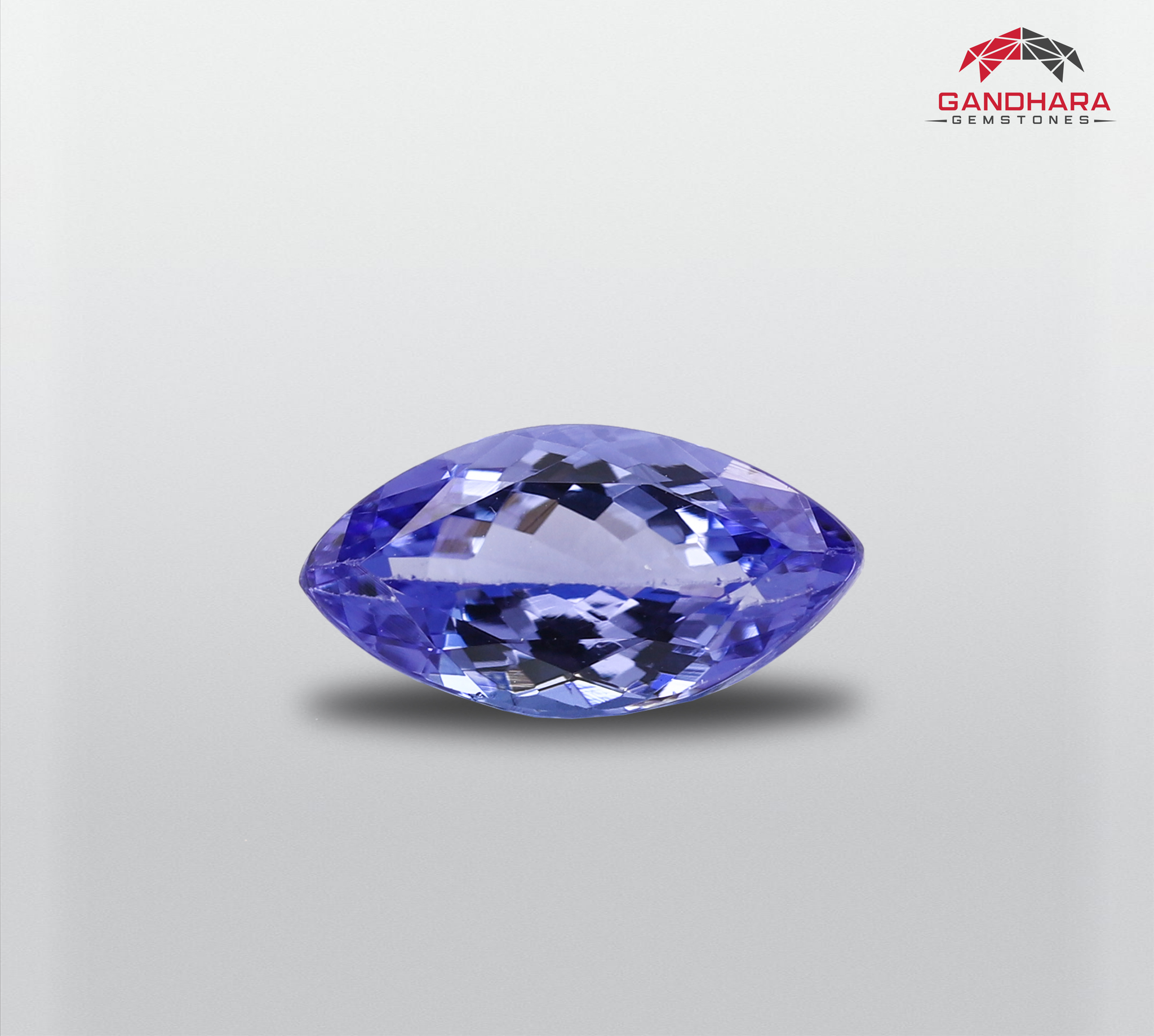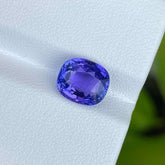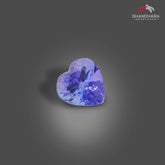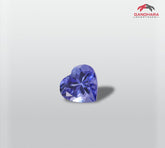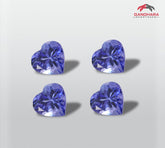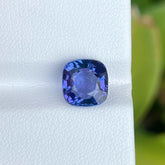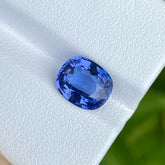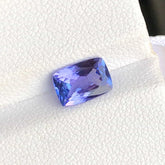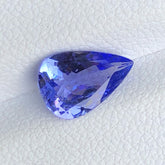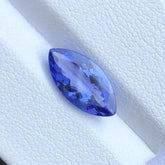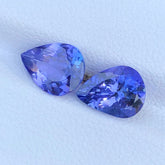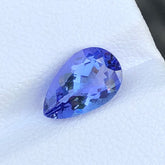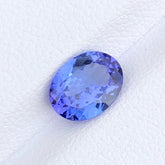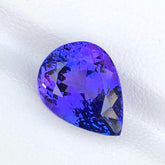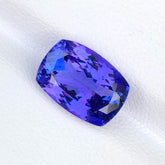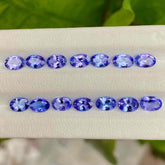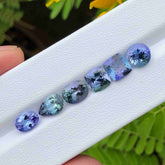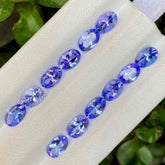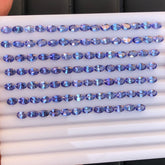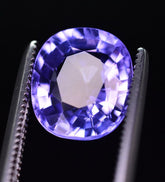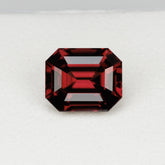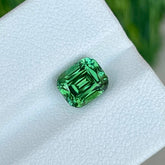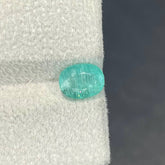Filter
54 results
30
- 10
- 15
- 20
- 25
- 30
- 50
Date, new to old
- Featured
- Best selling
- Alphabetically, A-Z
- Alphabetically, Z-A
- Price, low to high
- Price, high to low
- Date, old to new
- Date, new to old
Sort
Sort by:
- Featured
- Best selling
- Alphabetically, A-Z
- Alphabetically, Z-A
- Price, low to high
- Price, high to low
- Date, old to new
- Date, new to old
-
Beautiful Purplish Blue Tanzanite AAA Quality - purplish_blue
Beautiful Purplish Blue Tanzanite AAA Quality of 4.05 Carat from Tanzania has a wonderful cut in a Cushion shape, incredible purplish_blue color. Great brilliance. This gem is totally Loupe-Clean Clarity. Product Information: Gemstone Type Beautiful Purplish Blue Tanzanite AAA Quality Weight 4.05 carats...- $520.00
- $520.00
- Unit price
- / per
-
purplish_blue
-
Fantastic Soft Blue Tanzanite Gemstone - Blue
Fantastic Soft Blue Tanzanite Gemstone of 4.10 Carat from Tanzania has a wonderful cut in a Cushion shape, incredible blue color. Great brilliance. This gem is totally Loupe-Clean Clarity. Product Information: Gemstone Type Fantastic Soft Blue Tanzanite Gemstone Weight 4.10 carats Dimensions 12.4...- $510.00
- $510.00
- Unit price
- / per
-
Blue
-
Purplish Blue Tanzanite Heart Shaped - Blue
Purplish Blue Tanzanite Heart Shaped of 1.30 Carat from Tanzania has a wonderful cut in a heart shape, incredible blue color. Great brilliance. This gem is totally VVS Clarity. Product Information: Gemstone Type Purplish Blue Tanzanite Heart Shaped Weight 1.30 carats Dimensions 6.8...- $160.00
- $160.00
- Unit price
- / per
-
Blue
-
Fascinating Heart Shaped Tanzanite Stone - Blue
Fascinating Heart-Shaped Tanzanite Stone - Gemstones For Sale With Free Delivery Browse our new arrivals of new Loose Topaz Gemstones, Emerald Minerals, and many more in a store. All products are available with free delivery worldwide. We have also a special discount for a buyer who buys...- $165.00
- $165.00
- Unit price
- / per
-
Blue
-
Heart shaped Loose Tanzanite Set - Blue
This natural Heart shaped Loose Tanzanite Set of 4.80 ct from Tanzania has a wonderful cut in a heart shape, incredible blue color. Great brilliance. This gem is totally Eye clean. Product Information: Gemstone Type Heart shaped Tanzanite set Weight 4.80 carats (1.20...- $910.00
- $910.00
- Unit price
- / per
-
Blue
-
Unique Blue Natural Tanzanite Stone - Blue
Unique Blue Natural Tanzanite Stone For Jewelry of 4.95 carats from Tanzania has a wonderful cut in a Cushion shape, incredible Blue color. Great brilliance. This gem is Loupe Clean Clarity. Product Information: Gemstone Type Unique Blue Natural Tanzanite Stone Weight 4.95 carats Dimensions...- $670.00
- $670.00
- Unit price
- / per
-
Blue
-
Dazzling AAA Quality Natural Tanzanite - Blue
Dazzling AAA Quality Natural Tanzanite of 3.90 carats from Tanzania has a wonderful cut in a Cushion shape, incredible Blue color. Great brilliance. This gem is Loupe Clean Clarity. Product Information: Gemstone Type Dazzling AAA Quality Natural Tanzanite Weight 3.90 carats Dimensions 10.5 x...- $550.00
- $550.00
- Unit price
- / per
-
Blue
-
Natural Periwinkle Blue Tanzanite
Product Information: Gemstone Type Natural Periwinkle Blue Tanzanite Weight 1.72 carats Dimensions 9.1 x 5.9 x 4.0 mm Clarity Loupe Clean Shape Cushion Cut Origin Tanzania Treatment None Description: Tanzanite is named after the state of Tanzania; it was discovered in 1967 in the...- $185.00
- $185.00
- Unit price
- / per
-
1.56 carats Faceted Purple Blue Tanzanite - Blue
In the world of gemstones, few can match the enchanting allure of Tanzanite. Renowned for its mesmerizing Purple-blue hues, this gemstone embodies sophistication and elegance. Join us as we embark on a journey to explore the captivating world of Gandhara Gems and their exceptional...- $165.00
- $165.00
- Unit price
- / per
-
Blue
-
1.60 carats Faceted Cerulean Blue Tanzanite - Blue
Tanzanite, a gemstone found in only one place on Earth, Tanzania, has captured the hearts of gem enthusiasts and collectors worldwide. Known for its mesmerizing blue-violet hues, tanzanite has become a symbol of elegance and sophistication. In this blog post, we will delve into...- $155.00
- $155.00
- Unit price
- / per
-
Blue
-
2.35 Carats Cornflower Blue Tanzanite - Blue
2.35 Carats of Cornflower Blue Tanzanite is available for sale at wholesale price from Tanzania. Product Information: Gemstone Type Cornflower Blue Tanzanite Weight 2.35 carats Dimensions 13.1 x 6.6 x 4.1 mm Clarity VVS Origin Tanzania Shape Marquise Cut Treatment Heated Description: Tanzanite is...- $225.00
- $225.00
- Unit price
- / per
-
Blue
-
Cornflower Blue Tanzanite Pair
Product Information: Gemstone Type Cornflower Blue Tanzanite Pair Weight 3.35 carats (1.55 carats each) Dimensions 9.2 x 7.0 mm each Clarity Eye Clean Origin Tanzania Shape Pear Shape Treatment Heated Description: Tanzanite is named after the state of Tanzania; it was discovered in 1967...- $355.00
- $355.00
- Unit price
- / per
-
Natural Cornflower Blue Tanzanite - Blue
Product Information: Gemstone Type Natural Cornflower Blue Tanzanite Weight 1.80 carats Dimensions 9.2 x 7.0 x 4.8 mm Clarity Eye Clean Origin Tanzania Shape Pear Shape Treatment Heated Description: Tanzanite is named after the state of Tanzania; it was discovered in 1967 in...- $220.00
- $220.00
- Unit price
- / per
-
Blue
-
Faceted Cornflower Blue Tanzanite - Blue
Faceted Cornflower Blue Tanzanite which is for sale at wholesale price from Tanzania. Product Information: Gemstone Type Faceted Cornflower Blue Tanzanite Weight 2.27 carats Dimensions 10.9 x 6.9 x 4.3 mm Clarity Eye Clean Origin Tanzania Treatment Heated Description: Tanzanite is named after...- $245.00
- $245.00
- Unit price
- / per
-
Blue
-
Cornflower Blue Tanzanite Gemstone
Product Information: Gemstone Type Cornflower Blue Tanzanite Gemstone Weight 1.80 carats Dimensions 9.2 x 7.1 x 3.9 mm Clarity VVS Shape Oval Cut Origin Tanzania Treatment Heated Description: Tanzanite is named after the state of Tanzania; it was discovered in 1967 in the Mererani...- $150.00
- $150.00
- Unit price
- / per
-
Natural Royal Blue Tanzanite
Product Information: Gemstone Type Natural Royal Blue Tanzanite Weight 1.90 carats Dimensions 8.8 x 6.1 x 5.1 mm Clarity Eye Clean Shape Oval-Cut Origin Tanzania Treatment Heated Description: Tanzanite is named after the state of Tanzania; it was discovered in 1967 in the Mererani...- $210.00
- $210.00
- Unit price
- / per
-
Faceted Tanzanite Lot - 4.95 carat
Product Information: Gemstone Type Faceted Tanzanite Lot Weight 4.95 carats Average Dimensions 7.0 x 5.0 x 3.0 mm Clarity VVS Origin Tanzania Treatment None Description: Tanzanite is named after the state of Tanzania; it was discovered in 1967 in the Mererani Hills of Northern...- $100.00
$145.00- $100.00
- Unit price
- / per
-
Royal Blue Tanzanite - 6.53 carats
Product Information: Gemstone Type Royal Blue Tanzanite Weight 6.53 carats Dimensions 13.3 x 10.1 x 7.4 mm Clarity Loupe Clean Origin Tanzania Shape Pear Cut Treatment Heated Description: Tanzanite is named after the state of Tanzania; it was discovered in 1967 in the Mererani...- $1,140.00
- $1,140.00
- Unit price
- / per
-
Hot Purple Tanzanite - 4.92 carats
Product Information: Gemstone Type Hot Purple Tanzanite Weight 4.92 carats Dimensions 11.7 x 8.2 x 5.9 mm Clarity Loupe Clean Origin Tanzania Treatment Heated Description: Tanzanite is named after the state of Tanzania; it was discovered in 1967 in the Mererani Hills of Northern...- $960.00
- $960.00
- Unit price
- / per
-
Tanzanite Gemstones Lot - 6.35 carats
Product Information: Gemstone Type Tanzanite Gemstones Lot Weight 6.35 carats Average Weight: 0.45 carats Clarity Eye Clean Origin Tanzania Treatment Heated Description: Tanzanite is named after the state of Tanzania; it was discovered in 1967 in the Mererani Hills of Northern Tanzania. Tanzanite is...- $90.00
- $90.00
- Unit price
- / per
-
Natural Tanzanite Lot - 10.3 Carats
Product Information: Gemstone Type Natural Tanzanite Lot Weight 10.3 carats Weight Range 1.1 to 2.3 carats Clarity Loupe Clean Origin Tanzania Treatment None Description: Tanzanite is named after the state of Tanzania; it was discovered in 1967 in the Mererani Hills of Northern Tanzania....- $620.00
- $620.00
- Unit price
- / per
-
Natural Tanzanite Gemstones Lot - Blue
Product Information: Gemstone Type Natural Tanzanite Gemstones Lot Total Weight 5.20 carats Avg Weight 0.60 carats Clarity Eye Clean Origin Tanzania Treatment None Description: Tanzanite is named after the state of Tanzania; it was discovered in 1967 in the Mererani Hills of Northern...- $125.00
$140.00- $125.00
- Unit price
- / per
-
Blue
-
46.25 Carats Calibrated Size Oval Cut Blue Tanzanite
Buy 46.25 Carats Calibrated Size Oval Cut Blue Tanzanite from Tanzania with Loupe to Eye Clean Clarity and Oval shape which is for sale at wholesale price. Oval Cut Blue Tanzanite Weight 46.25 carats Avg. Dimensions 6x4x2.7 mm Treatment None Locality Tanzania Clarity Loupe...- $920.00
- $920.00
- Unit price
- / per
-
Beautiful Color Faceted Tanzanite available for sale
Buy Beautiful Color Faceted Tanzanite which is available for sale at Gandhara Gemstones. The price of this Beautiful Color Faceted Tanzanite in USD is $560. Weight 2.75 ct Treatment: Heated Clarity: Loupe Clean Price: $560- $560.00
- $560.00
- Unit price
- / per
